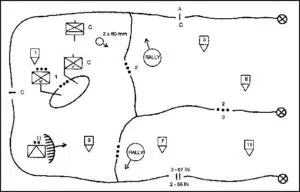Sergeant Major Eats Sugar Cookies”. This means nothing to 99% of you out there reading this. To anyone who had spent time in the Army (sorry, I can’t speak of the Navy, Marine Corps, or Air Force), this is the age old mnemonic device used to memorize the five paragraphs of an Army Operations Order. This is used in and out of combat in the Army for various reasons, and it translates well into the “civilian world”.

M – Mission. Take this negative image and make it go away. There are very few issues that cannot be recovered from (outside of a political realm). The mission needs to have a clear and concise idea of what you are trying to accomplish. Here, the mission is simply to take the negative image and make it go away.
E – Execution. How are we going to do this? What are we going to do to execute the mission? Your company needs reputation management, Social Media plans need to be put into place, and a complete re-evaluation of your company needs to get done. In this paragraph, you will be spending time detailing everything you need to do to accomplish your mission.
S – Service and Support. Who is helping us with this? Is it just us by ourselves? Typically, no. Your company may outsource to a group that specializes in media training. You may bring on-board a social media management firm. Maybe you will even bring on board a full service firm. In this section, all of this is documented.
C – Command and Signal. Who is in charge and how are we communicating internally? In the “civilian” world, this typically airs on the side of project management and the succession of “command” within the project. This also maps out an internal communications plan for your company in regards to how you are going to execute the mission.
Many companies are not this structured as to printing this out on paper for every single mission and every single project. Most companies might not even write such a structured process down on paper period. The fact does remain, however, you do this, and you might not even know. Hiring a Veteran in a corporate environment means he or she comes to the table already with this understanding and structure. Keep that in mind during your next round of interviews.
